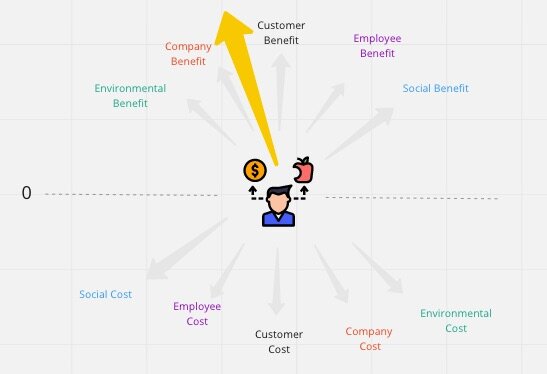Value is a Vector
I’ve been following the work of Mariana Mazzucato for about 6 months now (late to the game!) and I was initially attracted to it by how she speaks about value. A lot of what has changed in the last 50 years corporately is the FLOW of value. Societies and economies prosper while profits are redirected into value creation (investment in people) instead of being extracted from the system. What has changed drastically in the last 50 years is the DIRECTION and MOTION of value towards value extraction.
For the last month I’ve been learning Grade 11 Physics alongside my son. It’s new to him, and may as well be new to me even though I first learned it 40 years ago. As we were discussing the concept of force and the differences between scalars and vectors, it occurred to me that most people (my self included) consider value to be a scalar - simply a quantity. In line with Mariana’s thinking, value is really a vector; that is it has a quantity AND a direction. This notion led me down a path of wondering if there are analogues to Newton’s laws of physics that apply to value. What follows are some Miro frames I created to help explain my thoughts.
If we consider Newton’s 2nd and 3rd laws, unbalanced benefits or costs will cause value to move in the direction of the larger of the two and accelerate proportional to the ratio of the two.
Borrowing from Alistair Cockburn’s Heart of Agile, when we are solving problems for customers we are actually delivering DECISIONS inside products and services. While Mariana contends (and I agree) that traditional cost/benefit analysis of those decisions is outdated and needs to be replaced, for simplicity I have used that model here.
Product Owners are familiar with thinking about benefits and costs for potential users and we are starting to see them think about benefits and costs in the realm of their fellow employees. However, because of the notion of shareholder value, we’ve been trained to discount the real costs of short term gains as well as social/environmental impact. For clarity here are some examples of benefits and costs in each of the potential directions.
In this model value can only be CREATED when all the real costs and benefits are considered, and the resultant vector remains positive. Far too often, of course, the REAL costs (apart from commercial) are not considered and there is an illusion of a positive vector. In that realm, value is being extracted from the system in one way or the other, whether that is is reducing company life through maximizing shareholder value or extracting public resources while causing public harm.
How might this way of looking at value impact how you look at your role as a product owner on a team, a CEO of an organization, a corporate board member, a citizen of a town, or a human on the earth?



















